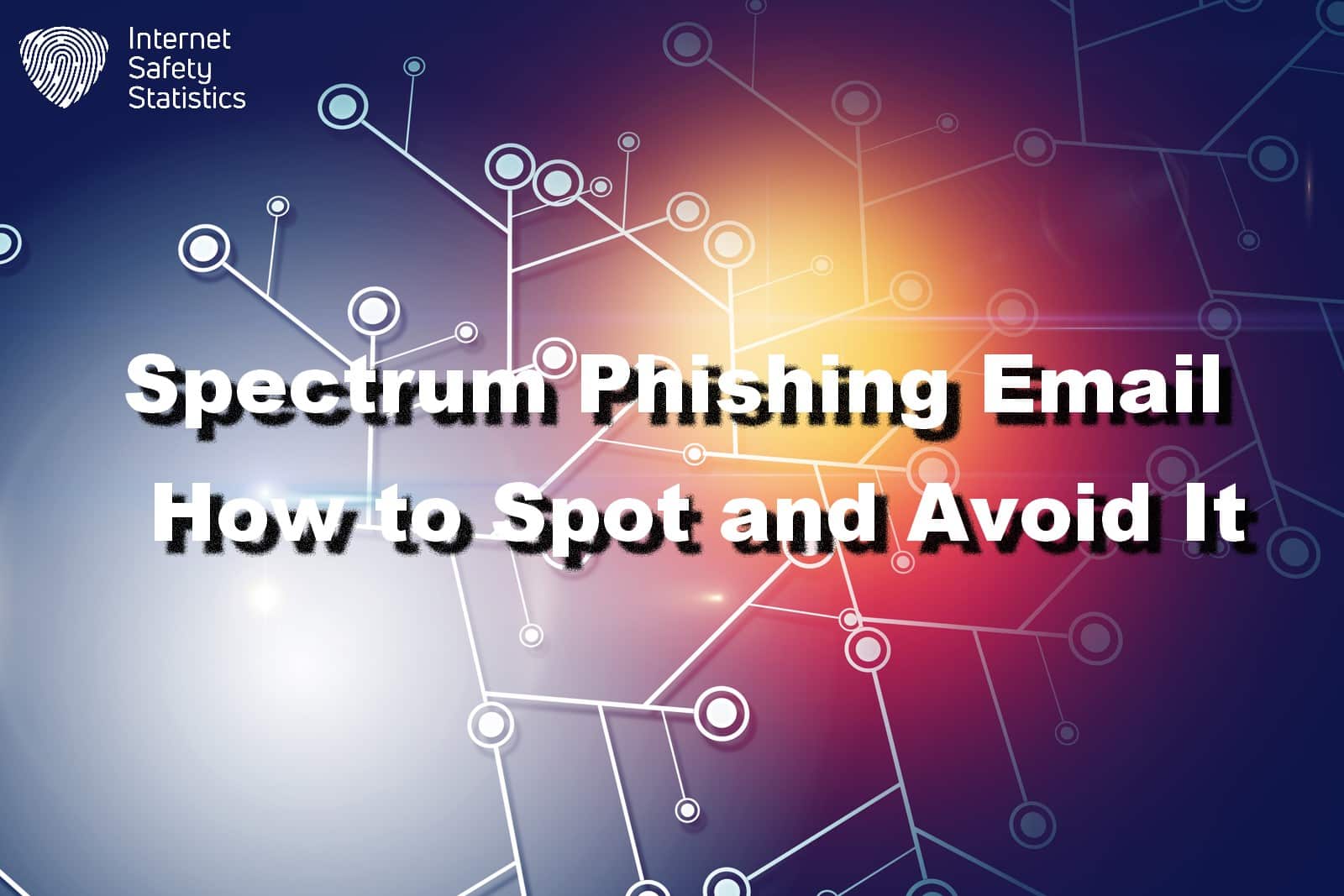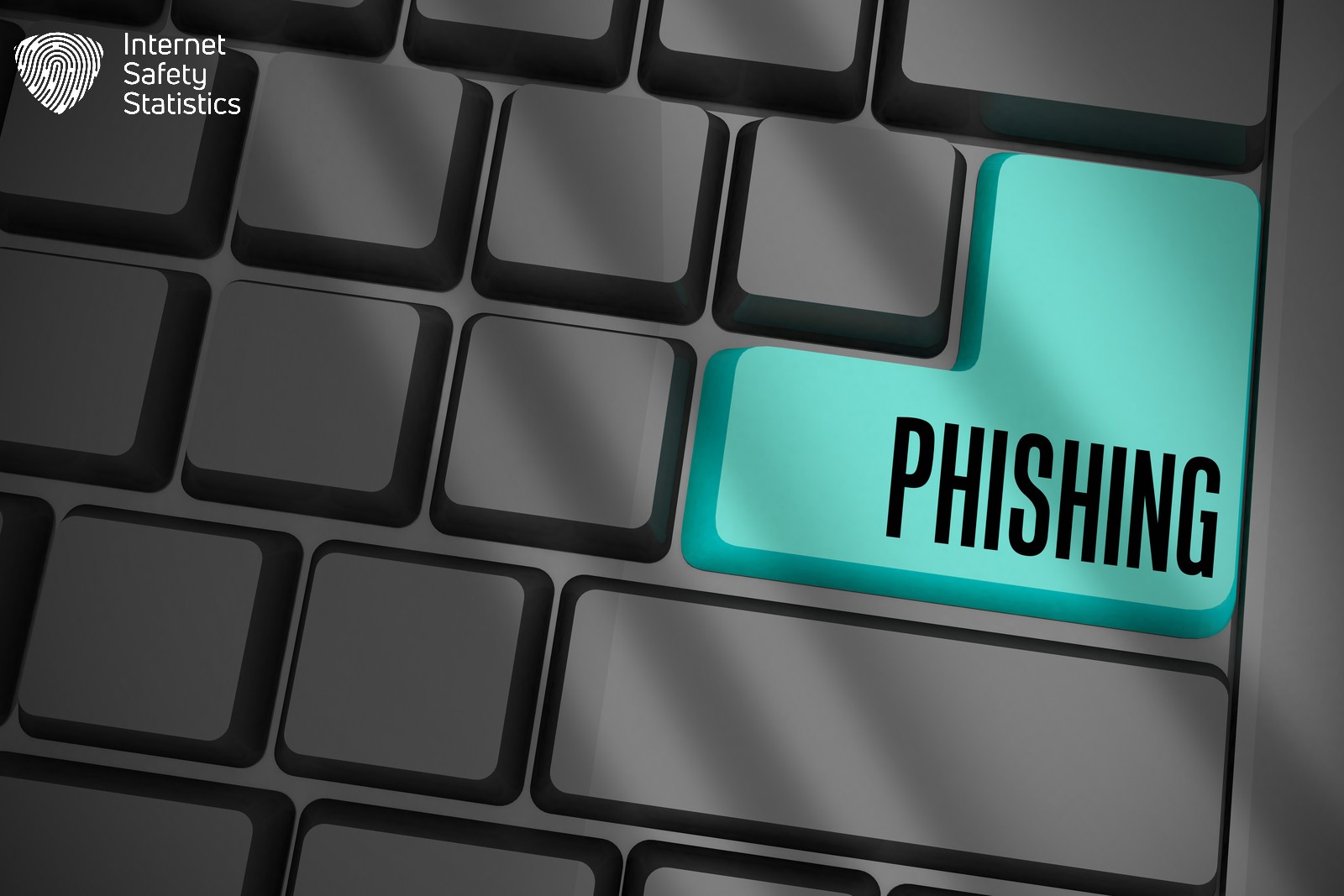
Spectrum, a leading US internet and cable provider, has recently warned its customers that a possible scam might be underway. The details of this scam unfolded in the picture of phishing emails the hackers sent using the company’s servers to trick users into clicking a fraudulent link and stealing their sensitive data, such as login credentials and credit card numbers.
The Spectrum Phishing email scam caused users anxiety. Worry not. We’re dissecting this scam and giving you the best tips to protect yourself should this phishing email find a way into your inbox.
What is a Phishing Email?

A phishing email is a scam cyber attackers use to trick the recipients into disclosing sensitive information. This fake email typically uses a legitimate business or enterprise’s name, logo and duplicate website. In many cases, it’s a business the victim is familiar with or passionate about. Cyber attackers exert a lot of effort into staging these emails and if they can steal any information about the victim, such as charities or causes they support to use in their phishing attempt.
When the victim clicks on this phishing link, they are forwarded to either a fake duplicate website or the original website, but after disrupting its domain to be able to steal client data. When the victim enters their login credentials, the attacker can steal such information to use illegally.
What is Spectrum Internet Service? Is it a WiFi Network?
Spectrum Internet Service is a reputable internet provider in the United States. The company offers clients several bundles and deals to suit their needs for up to 1Gbps. More than 40 million households in the US have utilised the company’s services, where some internet bundles offer a free WiFi router. Spectrum Internet Service is not a WiFi network but a WiFi internet provider.
When you purchase one of the bundles from the company, you are getting many features, such as:
- The different internet bundles by Spectrum have a top speed of 1Gbps, which can accommodate your household devices during gaming, streaming and working from home.
- You needn’t worry about finishing your monthly quota or data caps; the company doesn’t have any data caps. So, you’re free to use the internet without worrying about extra charges.
- The company offers excellent value for money, where you get a fast and reliable internet connection without breaking the bank.
- Some Spectrum bundles include a free modem, an incredible gesture to start your browsing.
- Spectrum looks out for your online safety and provides antivirus software, free of charge, with all internet bundles.
- If you have any enquiries, their Customer Support is available around the clock to help address your problem through call, email or online message.
Spectrum Warns Customers from a Possible Phishing Scam
Spectrum warned its customers and the public domain that hackers were posing as the company and were contacting customers through several means to scam them out of their money. The company stated the hackers were using phishing emails and pretending to be Spectrum customer service through a Spectrum Phishing Email. After further research, the company also reported that numerous customers claimed scammers contacted them first by phone, where they posed as company representatives and tried to urge them to pay for an alleged discount with Target gift cards.
What is a Spectrum Phishing Email?
A Spectrum phishing email is a malicious email that hackers send customers pretending to be the internet provider company Spectrum. This phishing email targeted customers through numerous channels, such as texts and emails, to allegedly offer them a fifty per cent reduction in service costs for two years in exchange for a $99 fee.
What Did Spectrum State About the Possible Scam?

Spectrum stated that the scammers were posing as their customer service and the victims at the same time to obtain money illegally. The company broke down the process as follows:
- Initially, the scammer contacts the victims via email and asks for their website’s personal information, such as credit card numbers, account information and security pins, among other details.
- The scammer then contacts the company’s customer service to authenticate your identity.
- The scammer uses your authenticated information to buy electronics such as mobile devices and pay using your data, using your address as the delivery address.
- The last step is the scammer will again pose as Spectrum and contact you to change the delivery address or request you drop the package at a shipping company’s office, such as FedEx.
After disclosing details about the phishing scam, Spectrum warned its customers not to respond to any emails under the company’s name that sound too good to be true. The company also stated that if any customer received and responded to such an email, they were scammed out of their money and involved in a re-shipping scam. Spectrum also stated that if any of the recipients replied to the phishing email, then they sent the scammer an alert authenticating your email, and they’d target it again in future scams.
If a customer discovers they were scammed, they must alert local authorities to keep them aware of the scammer’s work area. Spectrum announced that a customer can access their account through the My Spectrum Application or their Spectrum Account to ensure the safety of their information and account.
Did Hackers Scam Spectrum Customers through a Phone Call?
Yes. Unfortunately, several customers have reported that scammers contacted them first over the phone, pretending to be Spectrum Customer Service and offering the same discount as in the email phishing scam. Some customers suspected the call to be a scam and immediately contacted the company’s unified service number at +1/888.369.2408, where their suspicions of the possible scam were confirmed. Some customers reported getting spam emails and calls, which the scammers continuously pursued them.
How to Spot Spectrum Phishing Emails

The company shared several red flags with its customers and the public to spot a phishing email sent using the company’s name.
- The company’s official email addresses have a formal email form, which you will typically find in official company emails and newsletters.
- A scam or phishing email will normally contain a sense of urgency. It will try to scare or pressure you into taking action immediately. A famous example is claiming that your account has been compromised and you must update your payment information directly.
- Spectrum is a reputable company with a large, skilled staff, and it’s unlikely they will send an email with many spelling mistakes or poor grammar.
- A phishing email normally asks you to click a link, download or open an attachment. This link or attachment aims to steal your information through a fake website or a malicious factor hiding in the attachment.
Spotting a Spectrum scammer over the phone is similar. You will notice the speaker’s spoken language and grammar are not top-notch and full of several mistakes. The scammer might persistently call you to benefit from their offer, which is unlikely if it was an actual Spectrum representative who should be considerate of the customers.
What to Do If You Receive a Spectrum Phishing Email
Usually, when you receive a phishing email, the best course of action is to delete it immediately without clicking any links or downloading any attachments. However, the company’s Customer Support requested that if any of their customers receive a phishing email, they should forward the entire email with its heading to a unified email: [email protected].
If the scammer contacts you over the phone, you should also call Spectrum Customer Service to report the incident and provide them with any information regarding the scammer. The service number is +1/888.369.2408.
- If you have already responded to a phishing email and entered your personal information:
- Contact your bank or credit card company immediately to report the incident and cancel your cards.
- Change your passwords for all of your online accounts, especially your Spectrum account.
- Report the phishing attempt to Spectrum’s customer service.
- If you have already spoken to a scammer on the phone and provided them with any information:
- Report the incident to Spectrum’s customer service and provide them with any information you remember about the scammer, such as the phone number they called from.
- Consider placing a fraud alert on your credit report.
- Be aware that you may be targeted by other scams in the future, so be extra vigilant about protecting your personal information.
Understanding VPNs and Phishing Emails
Phishing emails rely on tricking users into clicking malicious links or downloading attachments. These actions can compromise your device and steal your personal information, regardless of your IP address location (which a VPN masks).
VPNs, while excellent tools for online privacy and security, don’t directly stop phishing attempts. They encrypt your internet traffic and mask your IP address, which can be beneficial in some cases. However, their role in anti-phishing is more preventative by:
- Potentially Blocking Malicious Websites: Some VPN providers maintain databases of known phishing websites. If you attempt to visit a website on this list, the VPN might block your access, preventing you from unknowingly entering a fake website.
- Warning Users About Suspicious URLs: Some VPNs offer features that analyze URLs found within emails. If the URL appears suspicious or has a history of phishing activity, the VPN might warn you before you click on it.
Remember, VPNs are a Secondary Security Measure
It’s crucial to understand that VPNs are not a silver bullet against phishing emails. They can be a helpful secondary security measure, but they shouldn’t replace the primary methods of protection:
- Critical Thinking: Always be cautious with emails, especially those with a sense of urgency or requesting personal information. Don’t click on suspicious links or attachments.
- Strong Passwords: Use unique and strong passwords for all your online accounts. Consider a password manager to help you create and manage them securely.
- Updated Antivirus: Maintain a reputable antivirus program with up-to-date protection to detect and block malware that might be hidden in phishing attempts.
By combining these essential practices with a VPN’s additional security features, you can create a stronger defense against phishing scams.
Helpful Advice to Protect Yourself from Spectrum Phishing Emails
Spectrum shared several tips with its customers to protect themselves from phishing email scams. Such tips are helpful in handling phishing attempts in general.
- If you’re suspicious about the website you opened, do not share any personal information and be careful not to share such information on social media platforms. Unfortunately, many hackers steal user data from social media platforms, where users pay minimal attention to their privacy settings.
- It’s best to create a unique password for each online account. If keeping these passwords safe troubles you, a password manager will safeguard them from prying eyes.
- If you suspect the website to be a scam, do not enter your credentials and close the website right away. If you click on the phishing link, you can refrain from entering your credentials, close the website, and immediately use another device to change your password.
- You can hover over the link in the phishing email and a pop-up screen with the website’s URL. Then, search for this URL online and verify whether it’s real or fake by comparing it with the company’s original URL.
- To prevent any malicious factors from invading your computer and stealing your data, keep your antivirus software up to date and ensure to install any system security updates to avoid any system vulnerabilities.
Security Tips for Windows and Apple Devices
Phishing scams can target any device, so it’s important to be aware of security measures you can take on both Windows and Apple devices to further protect yourself:
For Windows Users:
- Windows Security: Windows 10 and 11 come with built-in antivirus and anti-malware protection called “Windows Security.” Ensure you keep this enabled and update it regularly for the latest threat protection.
- SmartScreen: This feature helps prevent you from downloading malicious applications or visiting harmful websites.
- Strong Passwords & Password Manager: Create unique and strong passwords for all your online accounts, and consider using a password manager to securely store and manage them.
- Browser Security Settings: Most browsers offer security settings that can block pop-ups, phishing attempts, and malicious websites. Review and adjust these settings to your comfort level.
- Software Updates: Keep your Windows operating system and all software applications up to date with the latest security patches.
For Apple Users:
- Security & Privacy Settings: Apple devices come with robust security features built-in. Explore the Security & Privacy settings on your iPhone, iPad, or Mac to understand and customize options like two-factor authentication, app permissions, and data privacy.
- App Store Security: Download apps only from the official App Store, as Apple vets apps for security before allowing them on the platform.
- Safari Security: Apple’s Safari browser offers built-in anti-phishing and fraud protection. You can also enable features like “Block Pop-up Windows” and “Prevent Cross-Site Tracking” in Settings.
- Find My: Enable “Find My” on your Apple devices to help locate them if lost or stolen.
- System Updates: Just like Windows, keep your Apple device’s operating system and all apps updated with the latest security patches from Apple.
By following these general security practices on both Windows and Apple devices, you can significantly reduce the risk of falling victim to phishing scams and other cyberattacks. Remember, even with these measures, staying vigilant and exercising caution when dealing with emails, links, and unknown senders is crucial.
The Spectrum Phishing Email scam was sadly successful in numerous cases, and some customers are still receiving such scam emails, some over the phone. Exercise extreme caution before sharing your personal data via email or over the phone.
